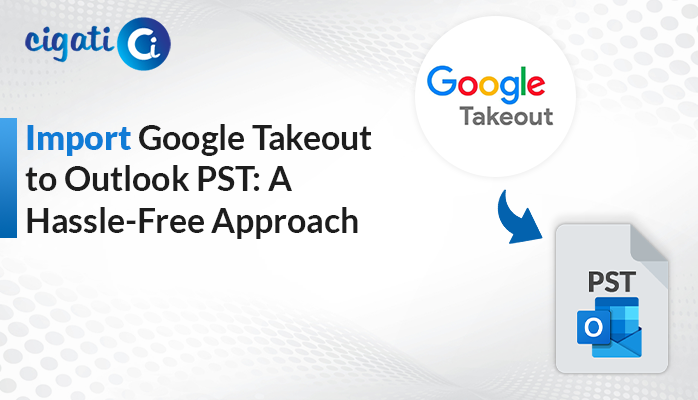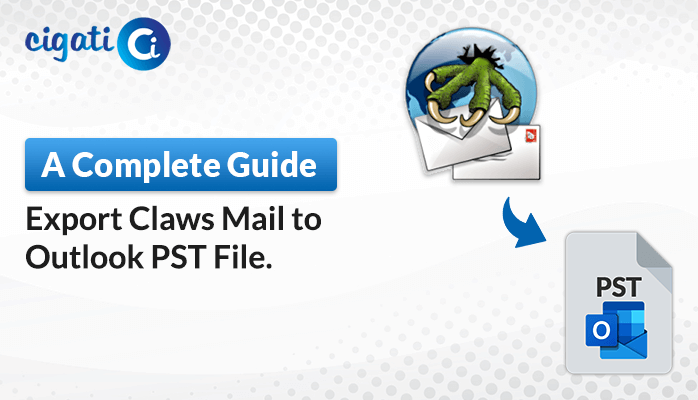-
Written By Rohit Singh
-
Published on June 30th, 2020
-
Updated on April 10, 2024
Import Outlook OST to Office 365 Account – Guaranteed Method
When you use email accounts like Exchange, Outlook.com, or IMAP in Outlook, it creates an OST file to store your emails automatically. Unlike PST files, you can’t directly import OST files into Office 365. However, you can convert OST files to PST format using a step-by-step process. Additionally, we have an advanced solution using Cigati OST to Office 365 Migration Tool, which can help you import OST to Office 365.
Moving your Exchange mailbox data to Office 365 brings many benefits. With Office 365, you can access your emails from anywhere. You can open your Office 365 mailbox on multiple devices, Android phones, iPhones, and tablets. That’s why many Exchange users prefer to have a copy of their Exchange mailboxes in Office 365. To do this easily, you can transfer your offline Outlook Data File (OST) to your Office 365 account.
Also Read: Import OST to Gmail
How to Import OST File into Outlook 365 – Using Best 2 Methods
There are several ways to do this. As a result, it makes it convenient for both Exchange users and Webmail users to keep their email tasks running smoothly.
#1. Manual Techniques for Importing OST Files into Outlook 365:
The following section will perform it handy. After that, we will discuss another solution for your better convenience. Moreover, this technique is distributed into two sub-parts. You just need to check it out.
Phase 1: Converting OST to PST:
- First, open the Outlook application on your screen.
- Afterwards, go to File Menu >> Import & Export >> Import/Export.
- Then, choose Export to a File and select PST file as the saving type.
- Next, select the OST file and decide whether to include subfolders.
- Further, choose where to save the PST file and click OK.
Phase 2: Uploading the Resultant PST File to Office 365:
- Now, open the Office 365 application.
- Then, go to Admin Centre >> Exchange Admin Centre >> Permission.
- Under Organization Management, click (+) and select ‘Mailbox Import Export‘ >> ADD.
- Choose the mailbox and save.
- Go back to Admin Centre >> Setup >> Data Migration.
- Subsequently, click on the Upload button.
- Next, make a new import job, name it, and choose Upload SAS URL.
- Further, save the URL.
- Then, install and run Azure AzCopy and use the command: AzCopy.exe /Source:\Network Path or File Location /Dest: “SAS URL”/V.
- Moving ahead, create a CSV file to map the uploaded PST file to a specific mailbox.
- On the Import Data window, upload the CSV file, validate, and save.
By following these steps, users can effortlessly import OST files to Office 365. The above solution has some loopholes, such as:
- Time-Consuming
- Quite Lengthy
- Not for non-technical users
- Not applicable for bulk conversion
If you don’t want to face all the challenges, follow the following section.
#2. Direct Method to Migrate OST File to Office 365
Cigati OST to PST Converter makes it easy to import OST files straight into Office 365. You just need to add your OST file to the tool and import it directly to your Office 365 account. Moreover, this wizard maintains the data integrity and allows users to view their targeted OST files in a preview panel. For a clearer picture, take a look at the steps for OST to Office 365 migration below.
Steps for Uploading OST to Office 365:
- First, Download and install the OST to OST Converter on your computer.
- After that, select the folder you want to import and click Next.
- From the software menu, choose Office 365.
- Then, enter your Office 365 username and password, then log in.
- At last, click Convert to begin importing the OST file.
Concluding Words
Moving your OST files to Office 365 brings many benefits for managing data, working together, and keeping your information safe. By following the steps in this guide, you can smoothly import OST to Office 365 and make the most of its cloud-based tools for productivity.
You May Also Read: Import OST File into Outlook
About The Author:
Rohit Singh is an Email Backup, Recovery & Migration Consultant and is associated with Software Company from the last 3 years. He writes technical updates and their features related to MS Outlook, Exchange Server, Office 365, and many other Email Clients & Servers.
Related Post




